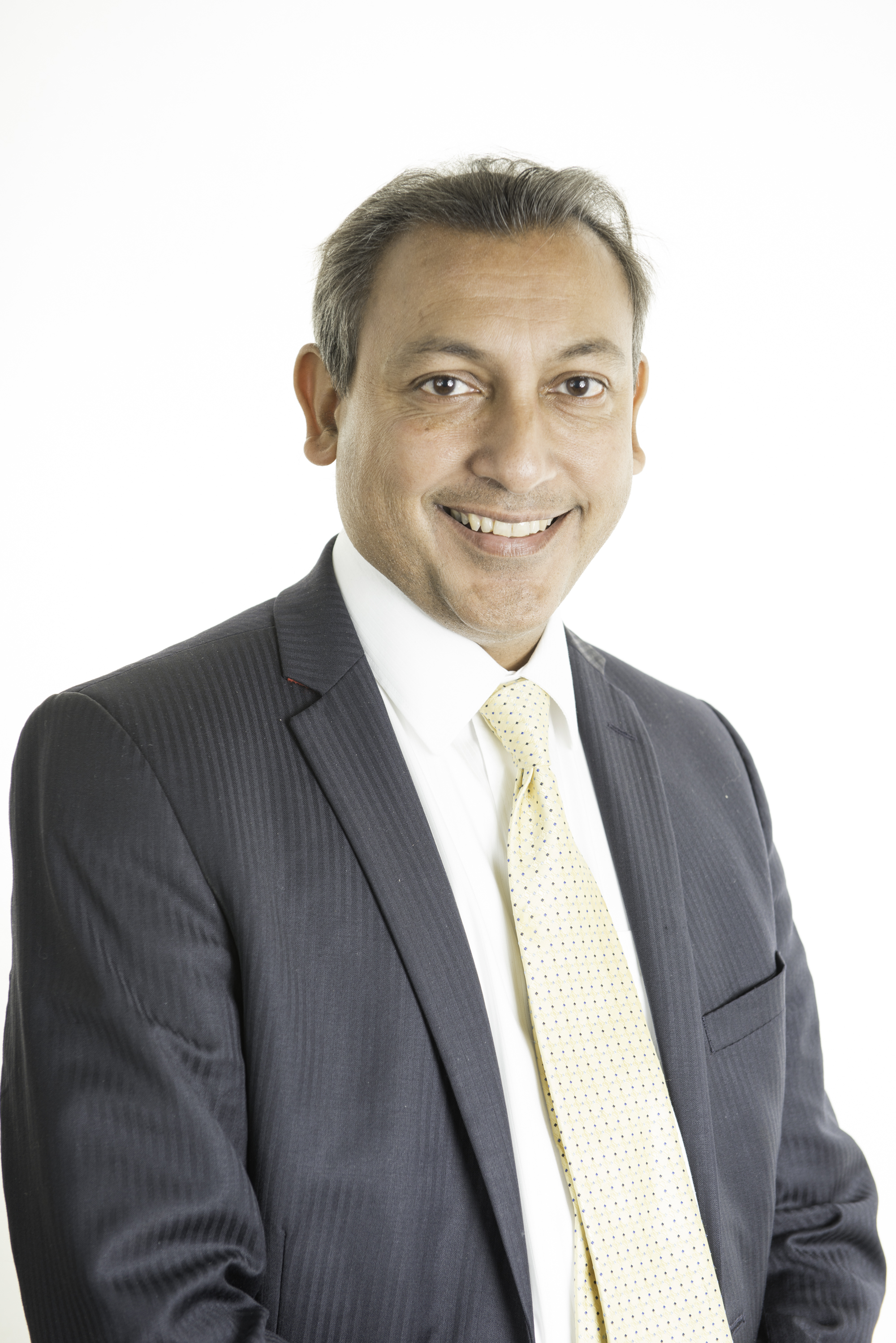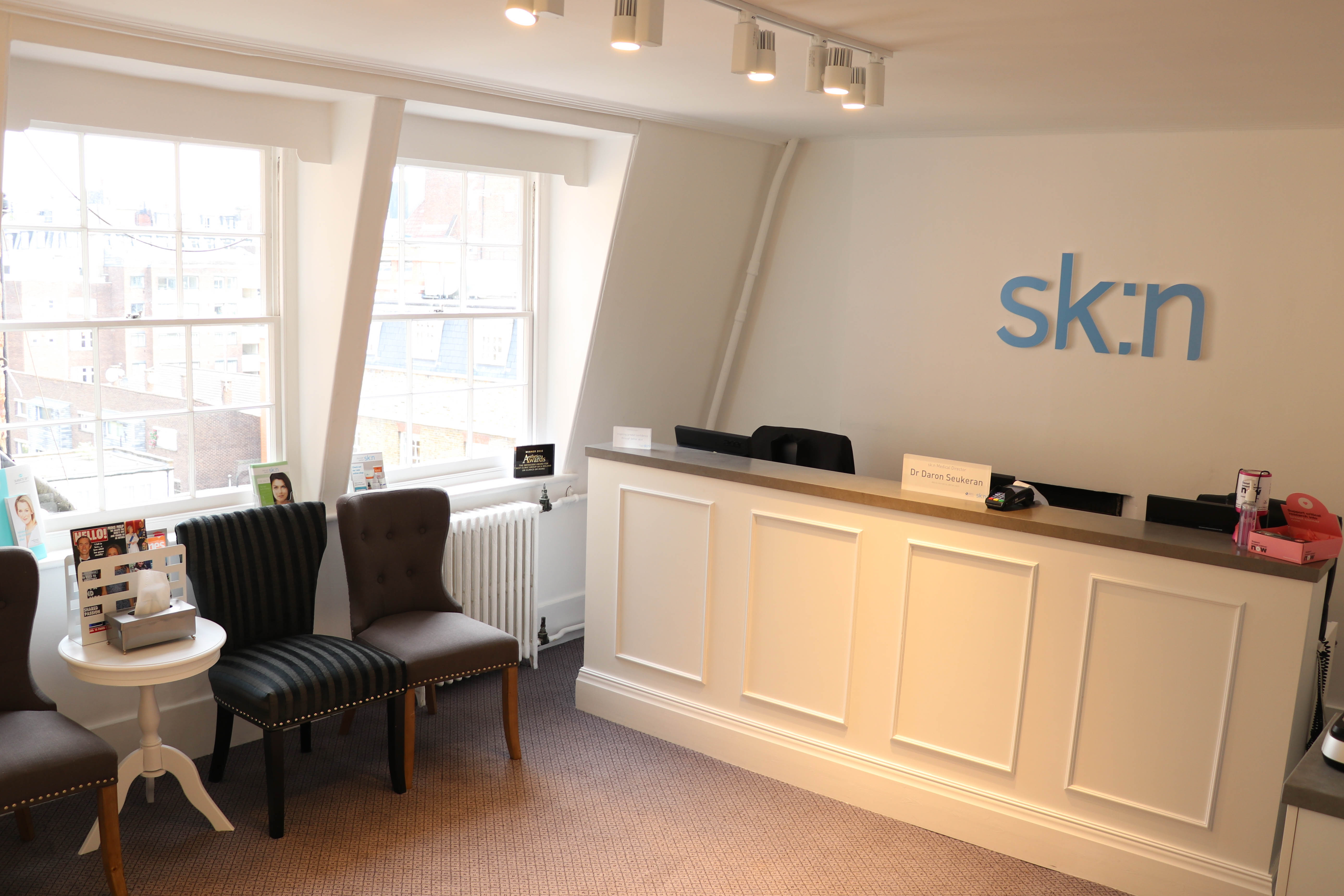How Sk:n is raising awareness of what it can offer beyond advanced skin treatments

It may seem fitting for dermatology group Sk:n to open a flagship location on Harley Street, the UK’s mecca for aesthetic procedures. However, the company has largely built up its successful clinic network on high streets across the country.
The opening comes as Sk:n seeks to raise awareness of what it can offer consumers beyond advanced skin treatments such as microneedling and peels. The seven treatment-room clinic is equipped with a wide scope of lasers, including a pico device for tattoo removal, and is the only branch to house an Ioma skin-scanning machine.
“What we do is not just aesthetic, it’s very much dermatology,” says Dr Daron Seukeran, sk:n’s group medical director. “We’ve seen a huge increase in the number of people accessing sk:n clinics who want to see a dermatologist on either a medical or aesthetic basis.”
He explains that current NHS funding cuts mean more people are looking for alternative options if they can’t get treatment on the NHS for benign skin conditions and things like mole removal and acne scarring treatment, which is beginning to lead more doctors into aesthetic dermatology.
“There’s a shortage of dermatologists in the country – there are only just over 800 in the UK, or roughly one in 80,000 of the population. In France it’s roughly one in 20,000,” he says, “But we’ve seen a growth in professionals from other areas moving into aesthetics.”
Changing perceptions
These changes mean sk:n is primed to position itself as a “one-stop shop” for all consumers’ skin needs, both aesthetic and medical, especially owing to its staffing structure, which Seukeran lists as “consultant plastic surgeons, GPs with a special interest in dermatology, nurses and nurse prescribers, and therapists.”
The group wants to emphasise this as a key point of difference moving forward: “The doctor-led side of our business is the fastest growing aspect, but a lot of people aren’t aware of the amount of medical work we’re doing,” says Seukeran. Every one of Sk:n’s 46 clinics has its own medical director and every region a regional medical director, who is supported by a medical standards team, and ultimately, Seukeran in his role.
“You’ve now got a group of patients who want access to a dermatologist, but waiting lists can be anything from six to 18 weeks. If you’ve got acne, for instance, or a routine mole you want to get checked, you’re looking at four months easily,” says Seukeran. “Patients need to know what’s available if they can’t get treatment on the NHS, but how do they find reputable places to have these things treated?”
The differences between what constitutes aesthetic and medical is “a grey area”, says Seukeran, but it’s where Sk:n is trying to establish itself, with experts on both sides of an increasingly blurred line.
“The concept of medical dermatology is a huge area within our clinics. For example, we’re seeing more and more patients coming in to access dermatology treatment for conditions like acne, which is handled very badly in medicine,” he says, adding, “for acne scarring, up until around 2012, we were able to treat some severe cases on the NHS but then funding was pulled completely, so now we can treat almost no one on the NHS.”

Treatment needs
The clinics are also experiencing a growing number of consumers aware of skin cancer risks and wanting to get moles checked. Seukeran says that a lot more men are seeking removal of unsightly skin conditions, suggesting not only that more consumers are concerned with looking after their skin and seeking professional treatment, but also that it’s becoming harder to escape the pressures of an image-obsessed society.
The rapid growth of injectables in the same period of time as the explosion of social media and the “selfie” culture is undeniable, and Seukeran agrees: “The injectables side has taken on a much bigger role than five years ago. People are really moving away from more invasive procedures.”
Seukeran says the clinics’ most popular treatments are the least invasive, and laser hair removal has risen year on year. “The general public used to think of aesthetics as plastic surgery but now they’re becoming more aware of the non-invasive options that allow for minimal downtime.”
Light the way
Laser is another key focus for Sk:n moving forward – the group recently appointed Syneron Candela as exclusive supplier of light and energy devices and invested in a wider range of machines. “To develop a really good laser clinic you need five or six different lasers on site, which then becomes a huge capital expenditure,” says Seukeran.
“One of the advantages of Sk:n is we have the ability to fund our clinics with the level of capital required to have the best equipment with a full scope of lasers, because one laser can’t do everything.”
The first Sk:n clinics were established in conjunction with hospitals, with consultant dermatologists performing both aesthetic and medical treatments on NHS patients. “Based on that reputation, we built clinics throughout the country in places where lasers weren’t really available at all,” says Seukeran.
The group is focused on developing this reputation further during its next stage of growth, which will involve gradually expanding its clinic network further across the UK. Seukeran explains: “You don’t need a full bank of lasers in every clinic, so in the North East one clinic might have a large set up of lasers and other smaller clinics will refer into that clinic for any major work. We’re trying to put in the infrastructure throughout the country because we’re finding there is huge demand throughout.”

Images: top to bottom; laser treatment performed at Sk:n, Daron Seukeran, the reception at the Harley Street clinic


